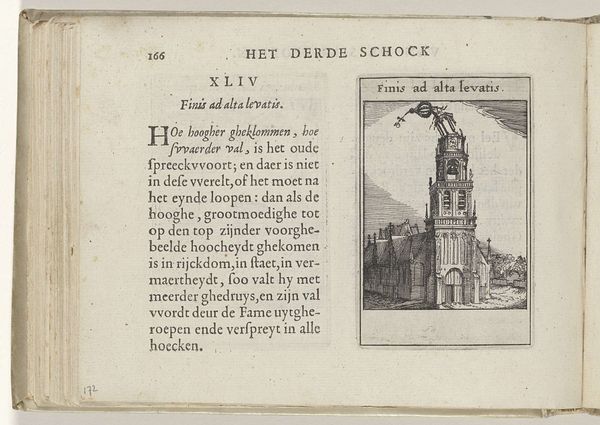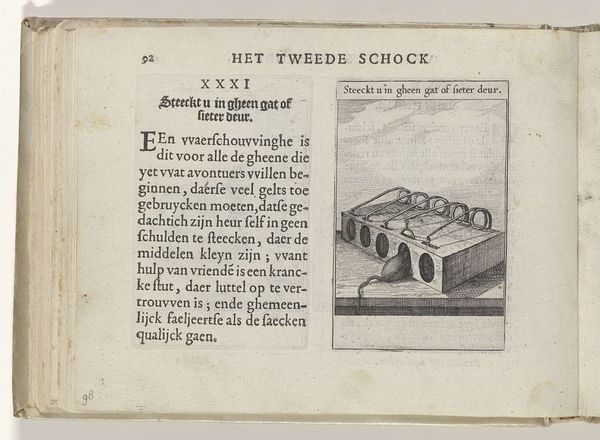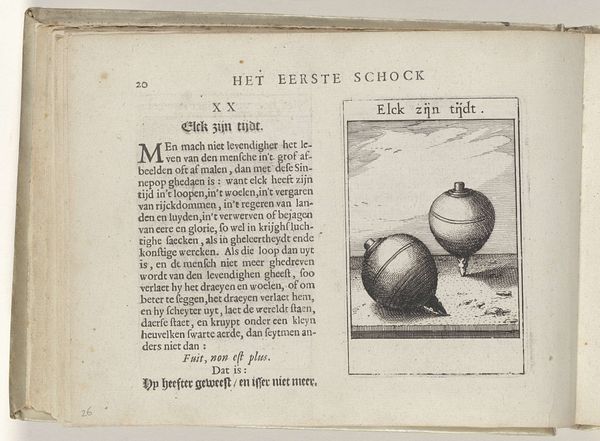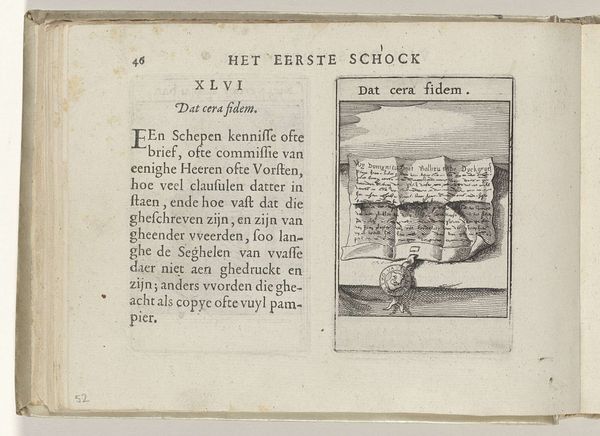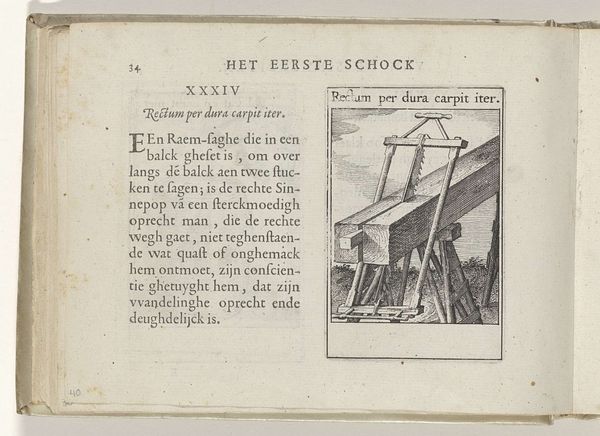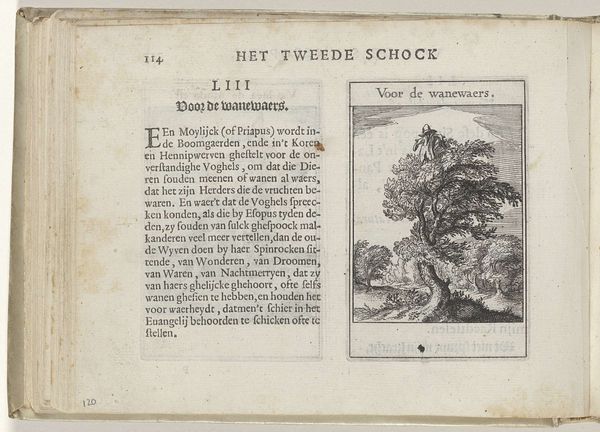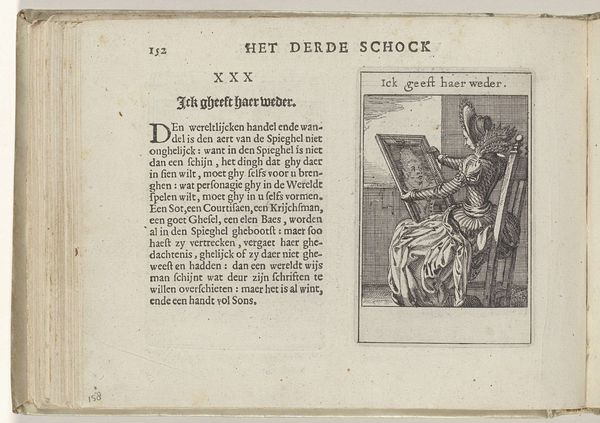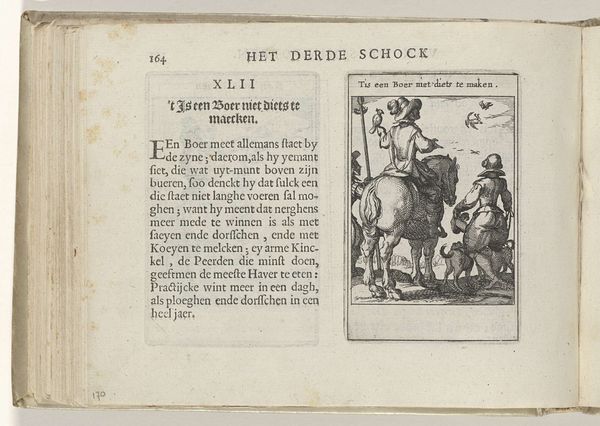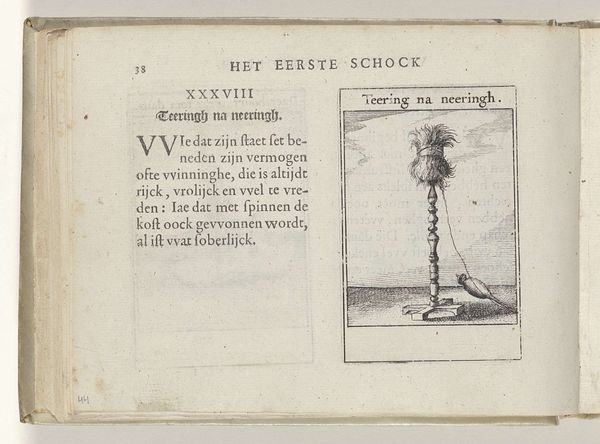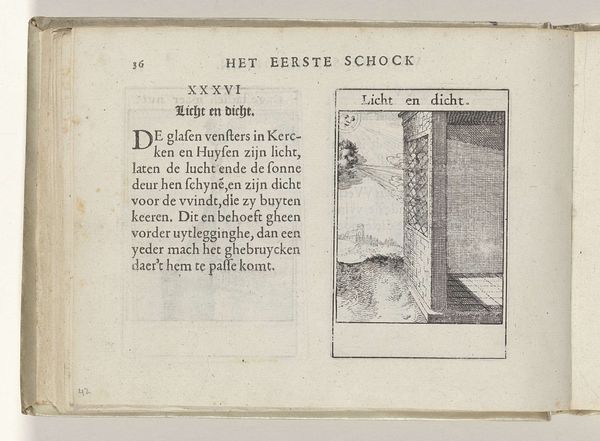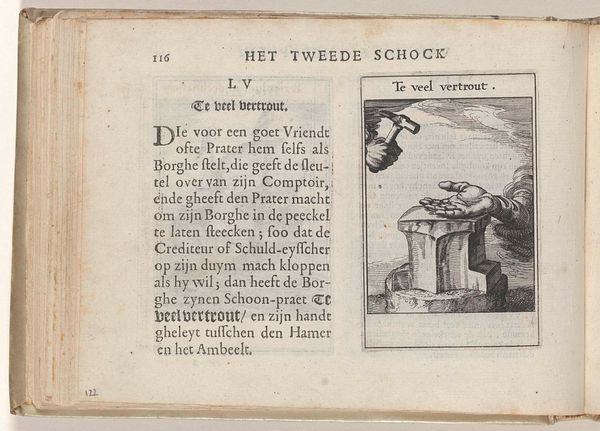
graphic-art, print, engraving
#
graphic-art
#
dutch-golden-age
# print
#
engraving
Dimensions: height 137 mm, width 188 mm, height 95 mm, width 60 mm
Copyright: Rijks Museum: Open Domain
Editor: So, this engraving, "XXX Kruijt voor de wilde woeste," made in 1614 by Roemer Visscher. It looks like an open book, and on one of the pages, a depiction of books stacked on each other. There’s a somewhat somber, almost grave, feeling to the image, I think? What strikes you most when you look at it? Curator: The most striking thing to me is the potential tension between the power of knowledge contained within these books, and their vulnerability. Consider the sociopolitical context of the Dutch Golden Age – a period of immense intellectual flourishing alongside brutal colonial expansion. Is Visscher perhaps inviting us to consider how easily intellectualism can become a tool of oppression, a "herb for the wild, savage," as the title suggests, used to cultivate a specific kind of order? Who benefits from this cultivated order, and who is excluded or violently repressed in its name? Editor: That's an interesting way to put it, framing the image in terms of potential violence within society, not as wisdom bringing civilization, but civilization through violent cultivation. It makes me see it less as celebrating learning, and more as interrogating the potential darker implications of intellectual pursuits, a tool for domination rather than enlightenment. Curator: Precisely. Think about the visual language used here. The books aren’t neatly organized, they're piled haphazardly. The text references Plato, Aristotle, Seneca. Is Visscher commenting on the weight and potential chaos of inherited philosophical tradition when removed from real-world problems? Who had access to these ideas, and how did they influence society in practical terms, especially with regards to gender or racial inequalities? Editor: So, you're saying that the artwork’s true meaning only appears once we recognize it's embedded in social struggles, raising questions about access, oppression, and who gets to define “civilization” to begin with. Curator: Exactly! By questioning those in power through this artwork, can start looking closer into its intersectional implications for current gender, race and political theories.
Comments
No comments
Be the first to comment and join the conversation on the ultimate creative platform.
